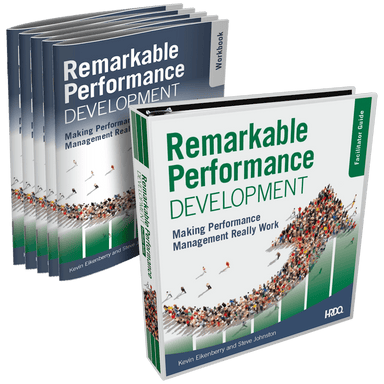Ask anyone to tell you what they think about the performance management process at work, and you will get a different response. Everyone has an opinion, whether they are an individual contributor and are the recipient of the “performance review” or a leader who is likely both a giver and receiver. Unfortunately, those opinions and experiences are rarely glowing and are often negative.
The performance management problem
While no organization wants to set up a performance management process that people don’t like or don’t find helpful, too often, that is what happens. Learning professionals and HR teams are working hard with good intentions; it’s just that performance management processes often fall short of their intended goals which is the performance management problem called time horizon.
There are several reasons this can happen, but I want to highlight just one: most performance management processes have the wrong time horizon. My point is this is most of these processes look backward to consider:
- How people did
- What their results were
- What happened
- Whether they improved or not
Notice that all of these are about what has already happened. While we need to know that, and that is important, consider this question: What can you change about the past?
Unless you possess powers I am unaware of, the answer is nothing. You can’t change the past, and neither can anyone else. When we do performance reviews (notice that the name tells us that we are looking at the past), we spend all our time looking back – having a history lesson. Since we can’t change it – if all we do is look back, it can’t be very helpful.
A better approach
While having a clear picture of what did happen (and to be clear, sometimes we need to see a perspective beyond our own to remove blind spots or get out of denial) is important for context, it isn’t by itself actionable. That is why if we move our time horizon from “the past” to “the past and the future,” we can truly help people do something with the performance conversation.
This matters whether someone is doing really well or has some significant performance gaps. In either case, people need to know where they are and what to do to make it better. Once we change the time horizon, we transform the traditional performance management/review conversation into a status report and a planning session. That change provides what the developers of your process wanted and helps make it part of ongoing improvement and growth rather than a source of consternation and frustration.
What you can do now
The best news here is that you can change the time horizon of your performance management process at no cost. You don’t need to change software, your forms, or even your process. In fact, as an individual leader, you can make this adjustment unilaterally. As a leader, tell your team members you want the meeting to be more than just a review. Encourage them to come prepared to talk not only about the past but about what comes next. Then, make sure your meeting includes a healthy dose of “what’s next?” or “now what?” questions, and not just “here’s what happened.”
By the way, do you see what I just did? I changed what I am suggesting you do in your performance management conversations. I went from a discussion of “what is” to a discussion of “what’s next.” Hopefully, I achieved my goal of creating a valuable, actionable message for you and practicing the lesson at the same time – proving my point.
Making this change will get you better results and begin to change the perception and experiences people have of performance management for the better. Not with words but with action.
Effective problem management
The key to more effective performance management lies in changing our time horizon. Instead of dwelling solely on past achievements and failures, we should expand our focus to include the future. By making this shift, we transform performance reviews into valuable status reports and planning sessions. This approach aligns with the original intent of these processes. fostering continuous improvement and development. The good news is that you don’t need a complete overhaul of your system to make this change. As a leader, you can unilaterally adjust your approach, encouraging team members to come prepared to discuss not just what’s behind but also what lies ahead. Emphasize “what’s next?” questions in your conversations, and watch as your performance management becomes a catalyst for growth and positive change, dispelling the frustration and skepticism that often surrounds it. Remember, actions speak louder than words, and this shift in perspective will deliver better results and a more favorable perception of performance management.

















